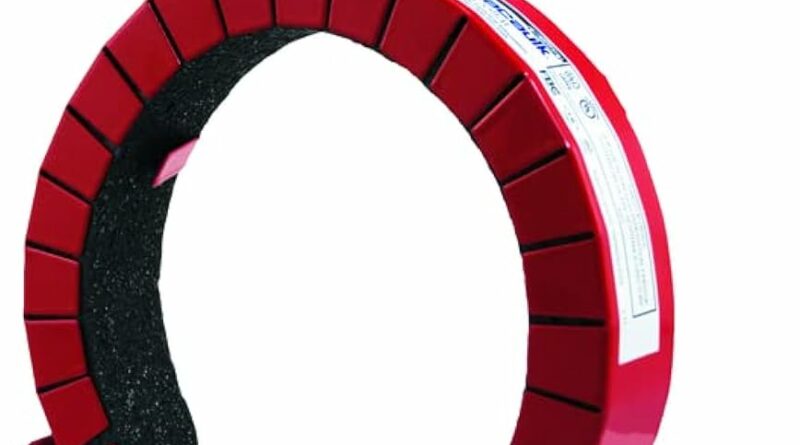Where To Install A Metacaulk Pipe Collar Properly?
A Metacaulk pipe collar is essential for maintaining fire safety in buildings. It helps seal penetrations in fire-rated walls, ceilings, and floors, preventing fire and smoke from spreading. Correct placement is necessary for optimal performance. Whether working on a residential or commercial project, knowing where to install this firestopping device is critical.
The Purpose Of A Metacaulk Pipe Collar
A Metacaulk pipe collar is designed to protect openings where pipes pass through fire-rated surfaces. It expands when exposed to high temperatures, effectively sealing off the gap and slowing fire progression. Without it, a fire can quickly spread through these weak points, leading to severe damage and safety hazards.
Key Locations For Installing A Metacaulk Pipe Collar
1. Fire-Rated Walls
Fire-rated walls are one of the most crucial areas for pipe collar installation. These walls separate different sections of a building, preventing a fire from moving rapidly from one area to another. Any pipe passing through a fire-rated wall needs a properly placed Metacaulk pipe collar to maintain the integrity of the barrier.
2. Ceilings With Fire Ratings
In multi-story buildings, fire-rated ceilings are common to prevent fire from moving between floors. Pipes running vertically through these ceilings must have a firestop collar at the penetration point. This ensures that the fire does not travel upward, threatening the safety of occupants on higher levels.
3. Floor Penetrations
When pipes pass through a fire-rated floor, a Metacaulk pipe collar should be installed at the base of the penetration. This prevents flames and smoke from reaching upper floors, providing crucial extra time for evacuation and minimizing structural damage.
4. Fire-Rated Shafts And Chases
Buildings with mechanical shafts and chases require strict firestopping measures. Any piping passing through these confined spaces should have a Metacaulk pipe collar. This step helps control fire within the shaft and prevents it from spreading to adjacent rooms or floors.
5. Basements And Utility Rooms
Basements and utility rooms often contain a complex network of piping. These areas tend to be overlooked, but since they typically house gas and water lines, proper firestopping is necessary. Installing pipe collars at wall and floor penetrations in these rooms reduces fire risks significantly.
6. Parking Garages
Underground parking garages often have ventilation and drainage pipes passing through fire-rated structures. These locations require pipe collars to maintain compliance with fire codes and enhance overall building safety. Fires in these areas can spread quickly due to fuel sources, making firestopping crucial.
7. Commercial Kitchens
Restaurants and commercial kitchens have numerous fire hazards, including heat-producing appliances and flammable materials. Any pipe passing through fire-rated surfaces in these spaces should have a properly installed Metacaulk pipe collar to prevent a kitchen fire from spreading to other sections of the building.
8. Hospitals And Healthcare Facilities
Healthcare buildings must follow stringent fire safety regulations. Installing Metacaulk pipe collars at all necessary penetrations ensures a higher level of protection. Since these facilities house vulnerable individuals, slowing fire spread is critical for evacuation and safety.
9. Schools And Educational Institutions
Schools have high occupancy levels, making fire prevention a top priority. Pipe collars must be installed where pipes pass through fire-rated walls, ceilings, and floors. Proper firestopping measures protect students, staff, and property.
Common Mistakes To Avoid When Installing A Metacaulk Pipe Collar
1. Improper Sizing
Using a collar that is too large or too small reduces effectiveness. The collar should fit snugly around the pipe to ensure proper expansion and sealing in the event of a fire.
2. Incorrect Placement
A pipe collar should be installed at the point where the pipe penetrates the fire-rated structure. Placing it too far away can lead to gaps that allow fire and smoke to spread.
3. Using The Wrong Fasteners
Metacaulk pipe collars must be securely fastened to the surface using appropriate anchors. Weak fasteners can result in the collar failing under fire conditions.
4. Overlooking Sealing Requirements
Some installations require additional fire-rated sealants to complete the firestop system. Always check the manufacturer’s recommendations to ensure proper sealing techniques are used.
5. Neglecting Building Codes
Local building codes dictate where and how firestopping devices should be installed. Ignoring these regulations can result in safety risks and legal issues.
Final Thought
Proper installation of a Metacaulk pipe collar is vital for fire protection in any building. Fire-rated walls, ceilings, floors, utility rooms, and commercial spaces all require this essential firestop device. Avoiding common mistakes such as improper sizing, incorrect placement, and weak fasteners will help maintain building safety and compliance. By following the correct installation procedures, the risk of fire spreading can be greatly reduced, providing better protection for occupants and property.


